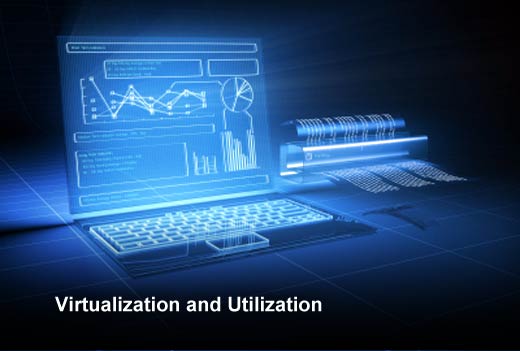Centuries ago, Sumerians used clay tokens to mark the content and the count of goods such as seeds. This documentation system evolved from tokens to tablets as the number of records grew. Similarly, retailers’ productivity skyrocketed when calculators replaced the abacus and using fingers to count. Later, portable computers changed people’s lives — they were no longer limited to computers with vacuum tubes where someone walked inside the computer to fix the parts. From PC to laptop, and now the iPhone, which put a computing device in people’s palms, technology continues to advance.
The following slideshow from Priya Natarajan, senior director of marketing, Ciena Agility, chronicles how our always-on, data anywhere economy is forcing service providers to make improvements in network efficiency and economies of scale to meet user demands. As nascent technologies, both network functions virtualization (NFV) and software-defined networking (SDN) show promise in preparing the network for the dynamic demands being placed on it — paving the way for people and machines to better communicate and fulfill the consumer’s growing appetite for data generation and consumption.
NVF and SDN: Paving the Way for Better Communications
Click through to see how our always-on, data anywhere economy is forcing service providers to make improvements in network efficiency and economies of scale to meet user demands, as identified by Priya Natarajan, senior director of marketing, Ciena Agility.
It’s Raining Bits and Bytes
Digitization has exponentially ramped up the growth rate of data compared to the analog era — in fact, some say that 90 percent of all the data in the world today has been created in the past few years. Machines communicating with other machines and everything connecting to the Internet further compound the growth rate of data, resulting in Big Data.
Virtualization and Utilization
Operators have been able to improve utilization rates from 10 to 70 percent by virtualizing storage and compute, and optimizing hardware investments and operational expenditures. Now, operators must turn their attention to optimizing the network. Static networks built to deliver content no longer work efficiently, and so operators must join the virtualization journey to improve network utilization and become agile.
Managing the Cloud
The end goal of an enterprise is to offer superior services rapidly to their customers by leveraging their core strengths. Instead of being distracted with IT, the task of managing/operating the cloud must be outsourced to operators. This frees up resources to focus on what is critical to the enterprise — the customer.
Network Bottleneck
With both storage and compute virtualized and optimized, the network has become the choking point of the data center. And with bandwidth and application demand increasing, operators now need a flexible, agile network so they can respond faster to enterprises’ unique requirements while also managing hyperscale data centers. In fact, the average bandwidth requirement in U.S. households is projected to grow from 2.2 Mbps in 2015 to 5.9 Mbps in 2018.
Network Functions Virtualization (NFV)
With virtualized layer 4 – 7 network functions (VNFs), services can be instantiated on commercial-off-the-shelf (COTS) hardware to provide benefits, including:
- Repurposing the same hardware for different VNFs based on current demand. For instance, when volumetric DDoS attacks slow down, the underlying hardware can now run additional WAN optimization virtual machines.
- Instead of spending up to 60 days to order a purpose-built appliance, configure and install it, operators can simply instantiate a new virtual appliance at a moment’s notice to deal with elastic demand.
New Services Take Time
In order to bring services to customers at a faster rate, operators need the ability to create a quick prototyping environment. Operators need a way to quickly deploy new services and shorten the time to revenue. By decoupling software from purpose-built hardware, SDN and NFV enable faster service creation.
Achieving Agility
Achieving business agility to quickly launch new services and adjust to enterprise demand requires a flexible network. Network management and orchestration software can tell the hardware which network functions need to be activated based on business needs at any given moment. Operators can use this solution to shorten the development cycle for new services and to automate the day-to-day operations of the existing services. They can now focus on offering differentiated services.
Lifecycle Management
Several use cases can be addressed with NFV, ranging from data center interconnects to mobility to security. This wide range of applications also requires careful scrutiny for optimization to avoid the pitfalls encountered in the traditional data center space. Managing the end-to-end lifecycle of VNFs along with on-the-fly license generation can consume a lot of time resources if not implemented properly.
What’s Next?
In effect, NFV and SDN are just tools to enable better communications between people and machines. Users will continue to demand access to information anytime, anywhere and continue to produce endless bits and bytes that our current networks can no longer support. As Big Data evolves into hyperscale data, it is imperative to have a flexible, scalable and reliable high-performance infrastructure that allows adding new services seamlessly. This will allow operators to focus on what is important – offering value-added service to their enterprise customers.












